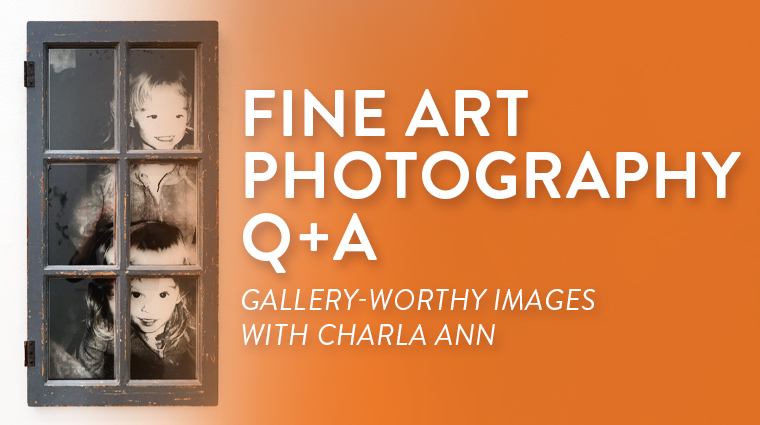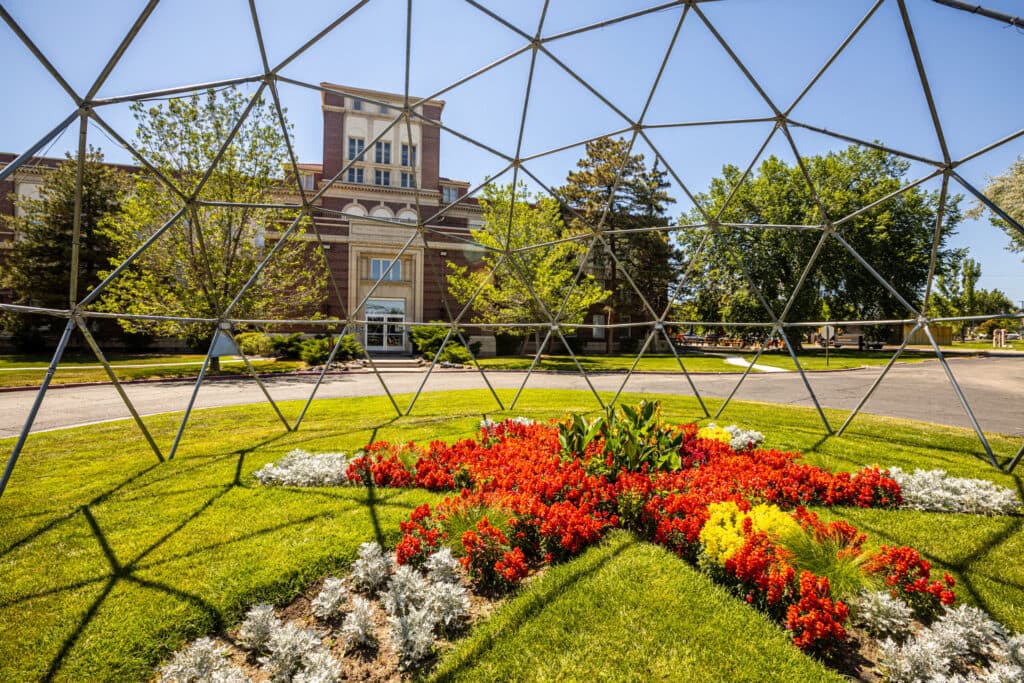Fine Arts student, Charla Ann, will be the first to tell you she isn’t much of a photographer, so why is her show “Mnemosyne” full of dozens of photographs from her life? “Mnemosyne” was on display in RMCAD’s Rude Gallery in September 2024 and was named for the Greek goddess of memory. Augmenting photos of her childhood with a fine artist’s touch, Ann makes a unique commentary on how grief can reshape memory. The artist stated that “by manipulating personal photographs, my work becomes a visual diary of the enduring influence of loss and how it evolves in the course of life.” However, if she never picked up the camera for any of her images then how would you define her work? She answered this question and more during a Q+A!

Q: What is Fine Art Photography?
A: For me, fine art photography is the opportunity to blur the lines between photography and other mediums. In that way, it’s more about expressing your visions, ideas, and emotions, rather than reality itself. So I’m not a photographer. My sister is the real photographer. I use family photo albums and manipulate them. So I’m using photography to express my ideas, but they are not pictures I took.
Q: What was it like to have your solo show in the Rude Gallery?
A: It was a little stressful at first because there was one piece I was still finishing with this giant window with lithography printed onto the window panes. It came down to crunch time before the show opened, but the final product turned out great and I’m very proud of that piece. I included a couple of pieces I wasn’t sure would fit into the exhibition. However, after working with the gallery team who were very helpful, I felt a lot more confident about the collection when the show went up. This is only my second ever solo exhibition, after the show I had at the Nicolaysen Art Museum in Wyoming. Getting the opportunity to exhibit at school has been an honor!

Q: What inspired Mnemosyne?
A: After my parents passed, I inherited this giant box of all our family photos. I have made these a big part of my work. When I go through the photos, I try to find the ones that bring me the strongest emotions whether that is joy or sadness. The goal of my show is to restore memories lost to trauma. I lost my mother when I was very young, so my childhood memories are very few and far between. I used these family photos to piece together memories that I no longer have. That’s what I’m trying to provoke in others, showing how loss can reshape memories and influence the way you feel about them. So while it is a visual diary of my childhood, I want the show to speak to others about their memories and their loss.
Q: What did you learn from the exhibition process?
A: I learned that making a cohesive body of work is really important to me. The themes of memory and time run through all of my work. No matter what medium I create with, I’m still using those same ideas to unify my work. My main goal was just to create a well-rounded show that utilized different mediums. It was a challenge to showcase my work cohesively but I think the ideas behind the pieces tied them together. While hanging the show, I realized I like a lot of room around my pieces. That way you can really take it in each piece without it getting visually overwhelmed. I enjoyed using the space of the traditional white gallery walls to emphasize the important ideas in my work.

Q: How else do you share your art?
A: I’ve always been an artist, but after the pandemic, I felt unsure about myself and what I was doing. I think a lot of people felt that way. That’s a big reason why I decided to go to school so that I could find my voice as an artist. I wanted to create art that would start my career and get my name out there. I would post on Instagram almost every day, but I found myself creating things that I thought other people would like, instead of focusing on what I wanted to create. I learned that it’s a difficult balance. Now, I put a lot of work into social media and my website but I also don’t let it monopolize my time. I post what I want when I want. I’m not trying to keep up with the algorithm. I think that building an online following is important but also to be true to yourself.
Q: What is your goal as an artist after graduation?
A: My dream job is an exhibitions curator. I started working at The Nicolaysen Art Museum in Casper, Wyoming when I was 18 and I have loved working in art museums ever since! Now, I currently work at the Denver Art Museum. I’ve done a lot of different things, like help set up shows, and promote exhibitions on social media. After I graduate, I’d like to continue on that path. I would be happy with pretty much any role in a museum.

Artistic Authenticity
Charla Ann’s Rude Gallery show is just one step in the promising artist’s development, however, it is clear that it has left an impact on how Ann views herself as an artist. It takes time to stage any art exhibit, but as Ann will tell you, the most important ingredient is authenticity. Whether it’s her work in “Mnemosyne” or the pieces she shares on social media, Ann is always true to herself. Only through building something so intimate has Ann been able to create something truly universal. However, she shares that “building that confidence came over time.” Now, she can see that time not only inflicts pain but also prompts growth.
Looking to curate your future?
Beginning a creative career is a lot like curating your own art exhibition. It’s about hard work, creativity, and seeing how each of the pieces fit together. Learn more about Rocky Mountain College of Art + Design’s online and on-campus programs today and begin curating your magnum opus!

